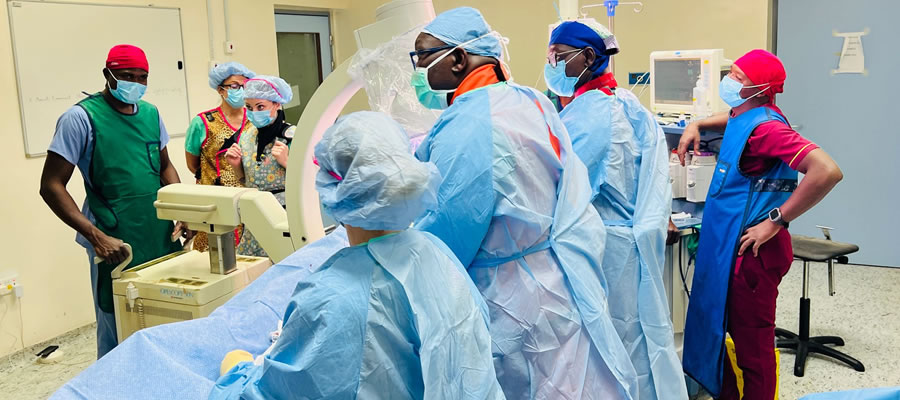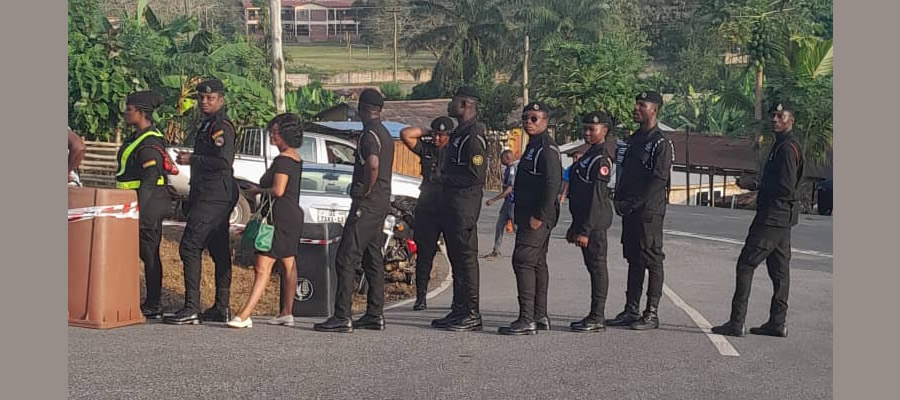

The District has a total of 154.1km trunk roads, out of this 69. Km is tarred. This represents 41.5% of trunk roads. It must be emphasized that this form part of the Trans-West Africa Highway. The rest of the trunk roads are gravel or earth-surfaced.
Apart from the trunk roads, the district has a total 253Km of feeder roads. Out of this only 59.3% are motorable. It must be noted that over 70% of these feeder roads can be found in the Southern half of the district. The major towns like Esiama, Nkroful, Aiyinase and Kikam and a few has telephone system as well as a GSM while others depend on radio operated telephone facilities. The situation needs to be improved to facilitate communication and investment in the district.
Terminal Facilities
Transport unions namely the Ghana Private Road Transport Union (GPRTU) and the Progressive Transport Owners Association (PROTOA) on behalf of the Assembly manage the lorry parks in the District. With the exception of Aiyinase, facilities for passengers at the lorry parks throughout the district are very poor with travelers exposed to the vagaries of the weather.
Household Income and Expenditure Pattern & Labour force
Considerable number of citizens working within the formal sector acquire higher income, but same cannot be said of the populace within the informal sector where which is mostly dominated by subsistence farmers whose income are seasonal, depending on the rainfall pattern and natural environment.
However, the labour force under economy of the District is segregated into 65% being Agrarian (food crop, coconut producers, and recently rubber producers) sector, 25% under the service sector( Local government workers, bankers etc.) and 10% being the industrial (mostly constructional workers and mining workers)
Local Economic Development
The District in terms of Local Economic Development performed poorly during the implementation of the GPRS II. The Assembly in its efforts of encourage local initiative through the transfer of skills has trained some community members in batik making, beads making and soap making.
Also IMBAR has undertaken a bamboo development project ‘Bamboo as biomass for charcoal production, for Tandan Community. This initiative in the long would improve the living standard of the beneficiary community and its adjourning communities.
However, some development potentials likes presence of Wetland, Forest Reserves, Rivers, vast bamboo resource and cultural practices like Kundum festival can be developed as tourist destination which would generate income for the local economy.
Also coconut producers should be trained on the various uses of Coconut husk, doormat, interior designs etc. through the Business Advisory Center (BAC). These initiative would help generate employment.
Marketing
The major marketing centers are at Aiyinase, and Asasetre. These are weekly markets. Aiyinase however has two market days. Sheds at these markets are not adequate. One of the main markets (Asasetre) has no permanent sheds. These further compounds the problems of marketing agriculture produce. Efforts should be geared towards the provision of permanent sheds at these centers to help raise the Revenue base of the District Assembly.
Rural Transport Infrastructure
One of the major problems confronting farmers is how to transport their produce, at minimum cost to the marketing centres. In the absence of any efficient processing and storage facilities this must be given serious consideration. A well – developed and efficient transport system will greatly enhance mobility of goods and people. It will encourage increased output and lower the final cost of foodstuff to the consumer. The district has 154 km of trunk roads of which 63.9 km are tarred representing 41.5%. It must be noted that this forms part of the Tans-African Highway. The rest of the trunk roads are either graveled or earth surfaced. Apart from these trunk roads the district has 253 km of feeder roads. Out of this only about 150 km is motorable all year round. It must also be noted that about 70 % of these feeder roads can be located in the southern part of the District. Carts are absent and the transportation of foodstuff from farms is by head poterage.
Lack of maintenance coupled with the heavily rainfall make these roads immotorable especially during the raining season. The absence of bridges and culverts along some feeder roads also render some of the major food producing areas inaccessible. There is therefore the urgent need to link up these areas to the marketing centres through the provision of bridges and culverts.
Besides the poor state of the roads, road density is also low. Due to the poor road network a number of major farming communities are not linked by road at all This does not augur well for inter and intra district flow of goods and services especially agricultural produce. Many farmers are therefore compelled to transport their produce by head poterage along footpaths or to market them in other district. Hence the need to introduce intermediate means of transport to reduce drudgery and promote efficiency in the rural transportation system.
Land and Water Management
The issue of land acquisition, sharecropping, tree tenure, exploitation of NTFP’s and land development still pose constraints to agricultural Development in the district. Insecurity of land as the main asset of agricultural production and farmers benefiting from the resources on the e cocoa due to the unsuitability of the soils in the area. With the highest annual rainfall in the country, with many rivers and water bodies all year round, the district agricultural is still rain fed. Irrigation schemes are totally absent. Small – scale irrigation systems and dugouts need to be considered as alternatives. A 26-acre irrigation rice project under the management of a co-operative society has not been in operation since 1996. The project requires repairs on the pumping machine and financial support to the farmers.
Information Technology
ICT until recent time was is in a very poor state. The recent inclusion of ICT basic school that is Junior High School and Senior High School has improve coupled with the sprung up of internet cafes and computer schools has boosted peoples interest in information technology. Esiama and Aiyinasi are two larger communities who are benefiting from government commercial ICT Centre. The Aiyinasi Community Information Centre (CIC) is a UNDP Funded facility which students in the District benefits from.
With the emergence ‘white-color’ jobs like mining and recently Oil companies’ activities is, most people are ready to upgrade their knowledge in Information Technology. However about 70% of the total population does not have access to Computer, with majority of these people living in the forest areas.
The extension of electricity to the most of communities would propel people to invest in Information and Communication Technology (ICT) thus improving I T knowledge in the long- run
Date Created : 11/20/2017 4:02:52 AM









 facebook
facebook
 twitter
twitter
 Youtube
Youtube
 +233 593 831 280
+233 593 831 280 0800 430 430
0800 430 430 GPS: GE-231-4383
GPS: GE-231-4383 info@ghanadistricts.com
info@ghanadistricts.com Box GP1044, Accra, Ghana
Box GP1044, Accra, Ghana